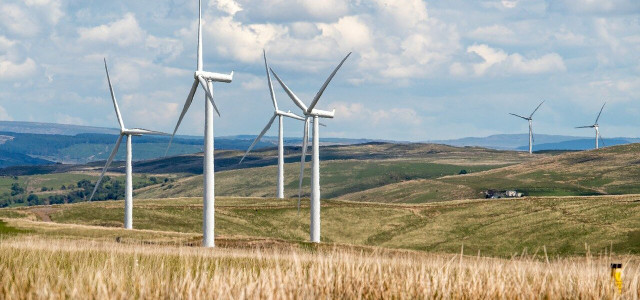The terms “carbon neutral” and “net zero” are often used interchangeably, but they are very different. Here’s what you need to know about carbon neutrality vs. net zero emissions.
Carbon dioxide is a gas that gets emitted into the air whenever something is burned. The incineration of trash, the burning of trees and the use of fossil fuels like coal, natural gas and oil all release tons of carbon dioxide. Because the world relies so heavily on fossil fuels, we pump massive amounts of carbon into the atmosphere. That is extremely dangerous because large quantities of carbon emission cause a greenhouse gas effect, trapping heat in the atmosphere and accelerating climate change. The consequences of climate change, including mass extinction, natural disasters and extreme weather, are already being seen and lived by many worldwide.
Mitigating climate change and its impact is essential. One way of doing so is by cutting carbon emissions. In the absence of federal laws on corporations’ carbon emissions, many activists are pushing for businesses and governments to manage and report their carbon emissions. Transparency and mitigation efforts are essential to hold corporations and states accountable for their environmental impact. In recent years, more companies have been working toward carbon neutrality or net zero emissions.
So, when it comes to carbon neutral vs. net zero emissions — what’s what?
Carbon Neutral vs. Net Zero

While carbon neutrality and net zero sound similar, the former is more of a short-term solution, while the latter is what we should aim for. The key difference in carbon neutrality vs. net zero emissions is the method with which an organization reaches its goal.
Carbon neutrality can be achieved by measuring emissions and balancing them out by purchasing carbon offsets. That means a company can continue to produce the same amount of carbon emissions, yet claim to be carbon neutral simply by financing the planting of trees or paying another company to reduce their emissions instead. The reduction in carbon emissions is then credited to the company that paid for it; however, that company does not decrease its carbon emissions at all.
Carbon offsets may sound effective as the overall carbon emissions are still intended to decrease. That said, it’s a short-term solution to a much larger problem. Carbon offsets provide a way to procrastinate from making the real structural change needed to decrease emissions. It makes corporations look like they are putting in an effort while they continue to prioritize profits over people.
In addition, carbon neutrality may be an example of greenwashing. Greenpeace has even dubbed carbon offsets a scam, claiming offsets commodify nature, distract from the real work, risk human rights and put vulnerable communities even more at risk. In many cases, carbon offsets are purchased from countries in the Global South, in communities that are further disadvantaged by offsets. Furthermore, lack of global regulation and increasing evidence indicate that carbon offsets do not even work.
- Read more about the effectiveness of carbon offsetting programs here.
Conversely, the concept of net zero emissions does not allow for compensated reduction. As defined by the Science Based Targets’ Corporate Net-Zero Standard, net zero can only be achieved by reducing emissions to zero. This can be done through the use of renewable energy, increased efficiency, electrification and more. Rapid and intense infrastructural changes are needed to completely upend a system and make it net-zero. Both short-term and long-term targets are included in this avenue.
More importantly, the term “net zero” refers to all greenhouse gas emissions, including methane, nitrous oxide, water vapor, and industrial gases — in addition to carbon dioxide. The definition of net zero even includes a goal to limit global warming to less than 1.5°C. So, when considering carbon neutral vs. net zero, net zero is a much better standard to aim for. It has a more promising environmental impact and ensures greater beneficial differences in the long term.
US Involvement



The US must take action to save the world from the climate crisis. America has caused more global warming than any other country by far. While some corporations have voluntarily committed to carbon neutrality or net-zero goals, it’s necessary to see federal regulation of emissions from all primary sources: transportation, industry, businesses, electricity producers, agriculture residences and land. The majority of gas emissions come from corporations.
The US Environmental Protection Agency currently has some federal greenhouse gas emissions regulations. These laws regulate transportation, oil and gas, power plants, electric utility generating units, and other industry sectors. However, there is far more work to be done.
The government has also set an ambitious goal of net-zero greenhouse gas emissions by no later than 2050. This goal was instated in 2021, and so far, followthrough has been weak. While the Biden administration has attempted to achieve its goal, legislative gridlock has made it nearly impossible. In turn, the government has taken insufficient action in passing legislation to accomplish those goals. Without real policy change, plans are meaningless. There are no regulatory consequences for inaction, and any new administration can completely rewrite environmental goals.
Still, the SEC has proposed increased corporate greenhouse gas emissions disclosure starting in 2023. If businesses are required to report their emissions, it could go a long way toward reaching a net-zero future. While the net-zero goal is positive, we need real and immediate action to achieve it.
We hope this answered your questions about the differences between carbon neutral vs. net zero. Want to learn more about sustainability and the environment? Follow us on Instagram or Twitter!
Read more:
- Agrihoods: Is Sustainable Suburbia the Way Forward?
- What Are Sustainable Building Materials and Why Are They Important?
- Environmental Organizations: 8 NGOs and Non-Profits Worth Supporting
- Techlash: A Democratic Move or a Threat to Sustainable Growth?
Do you like this post?






